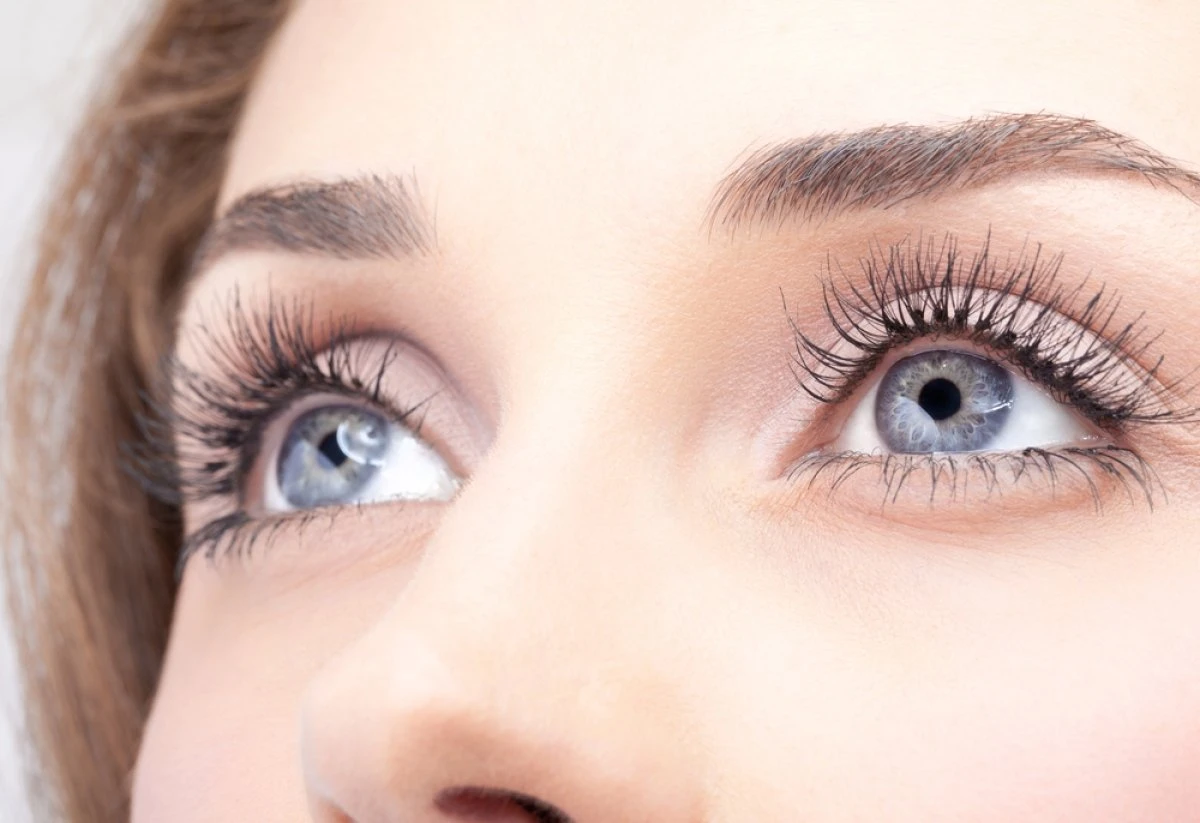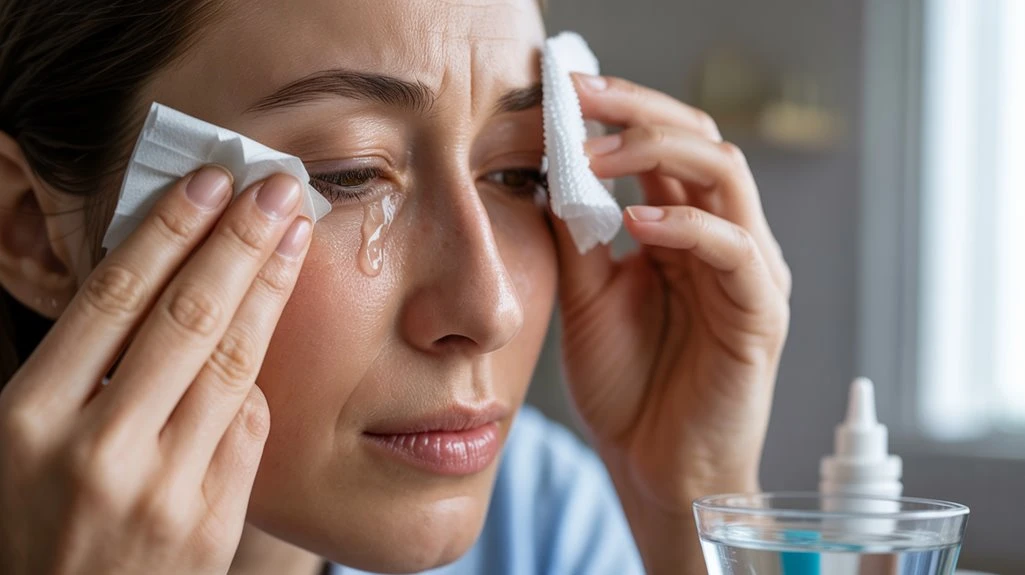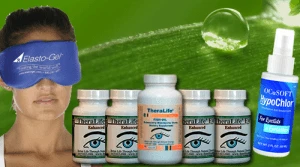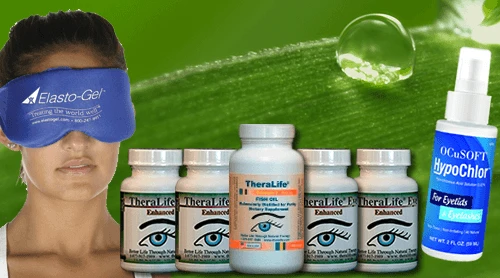To effectively address watery eyes, it is essential to identify triggers such as allergens, infections, or blocked tear ducts. One innovative solution is offered by TheraLife, the only company providing oral eye treatment care that supports overall eye health. TheraLife’s products are designed to benefit customers by targeting and alleviating symptoms from the inside out, addressing underlying issues rather than just surface symptoms.
For outdoor protection, shield your eyes, and indoors, maintain a stable environment using a humidifier and avoiding direct air flows. Regularly cleanse your eyelids and use appropriate lubricating or antihistamine eye drops. In cases of gland blockages, apply warm compresses and rinse with sterile saline to remove irritants.
TheraLife’s unique approach ensures comprehensive care for persistent, painful, or worsening symptoms, emphasizing the need for prompt medical evaluation if symptoms persist. Their methodical approach, combined with their unique oral eye treatment products, offers an effective solution for eye-related conditions, providing relief and comfort to their customers.
Powerful Oral Treatment for Watery Eyes – From Inside Out
Add To Cart
Key Takeaways
- Identify and avoid potential triggers such as allergens, wind, or smoke to minimize eye irritation.
- Apply a warm compress to closed eyelids to help unblock glands and soothe irritation.
- Use preservative-free artificial tears to lubricate and protect the eyes from dryness.
- Maintain eyelid hygiene by gently cleansing the lid margins with a specialized scrub.
- Seek medical advice if watery eyes persist, worsen, or are accompanied by pain, redness, or vision changes.
Identify the Cause of Your Watery Eyes
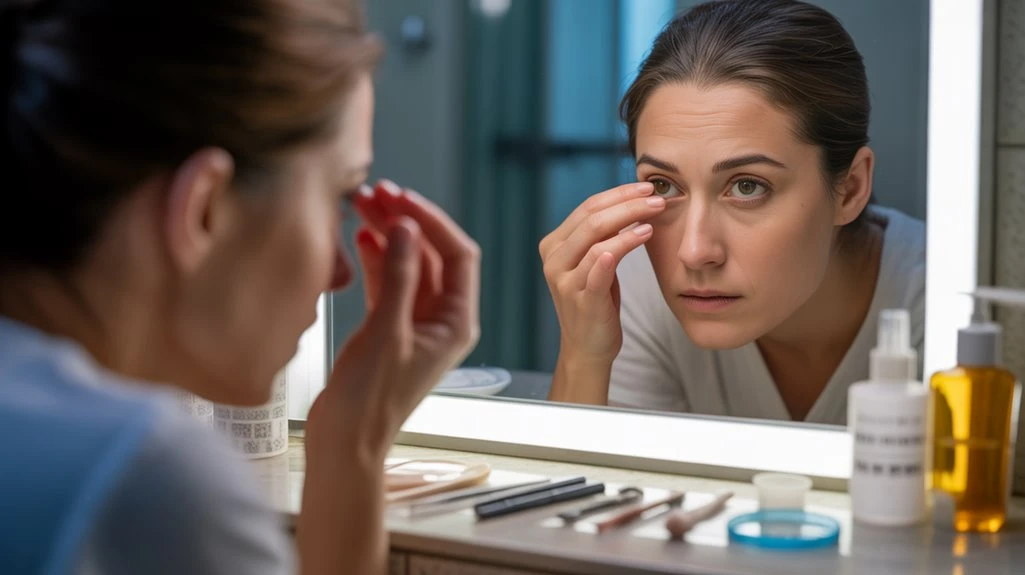
Watery eyes, or epiphora, can result from a range of underlying causes including allergic reactions, infections, blocked tear ducts, or environmental irritants.
To effectively address your symptoms, you need to identify the specific etiology. Start by noting when your symptoms occur—exposure to allergy triggers such as pollen, pet dander, or dust may indicate allergic conjunctivitis.
Evaluate for additional signs like itching or redness. If you spend long periods focusing on screens, eye strain could contribute to excessive tearing due to decreased blink rate and ocular surface dryness.
Examine for concurrent symptoms such as pain or discharge, which may suggest infection. Persistent or unilateral tearing might indicate a blocked nasolacrimal duct.
Consider wearing protective eyewear to act as a barrier against environmental irritants like wind and pollen, which can exacerbate symptoms.
Accurate identification allows for targeted management, reducing unnecessary interventions and optimizing symptom relief.
Adjust Your Environment and Habits
By modifying your environment and daily routines, you can considerably reduce triggers that exacerbate excessive tearing.
Prioritize eye protection by wearing wraparound sunglasses outdoors to shield against wind, dust, and allergens—common irritants that stimulate reflex tearing.
Indoors, implement humidity control; maintain relative humidity between 40-60% using a humidifier, especially in dry climates or during winter.
Low humidity accelerates tear film evaporation, resulting in compensatory lacrimation.
Limit direct exposure to fans, air conditioning, or heating vents, as these cause rapid tear evaporation.
Avoid rubbing your eyes, which can worsen irritation and stimulate additional tear production.
If you’re exposed to potential irritants such as smoke or chemicals, minimize contact and ventilate your environment.
Understanding dry eye disease is crucial as it affects quality of life, impacting daily activities and may lead to complications if not managed properly.
Optimizing these environmental and habitual factors plays a critical role in managing chronic watery eyes.
Use Effective Home Remedies
Simple interventions at home can alleviate excessive tearing and support ocular surface health. You can apply warm compresses to your closed eyelids, which help unblock meibomian glands, stabilize the tear film, and reduce evaporative loss. Employing natural treatments, such as rinsing your eyes with sterile saline solution, facilitates the removal of irritants and allergens. Maintain eyelid hygiene by gently cleansing the lid margins with diluted baby shampoo or specialized lid scrubs. Some individuals benefit from herbal remedies like chamomile tea compresses, which possess anti-inflammatory properties and may decrease mild ocular irritation. Hydration also plays a key role; drink adequate fluids to support tear production and overall ocular surface integrity. Utilize a humidifier to maintain ambient moisture and prevent excessive evaporation of your tear film. For those experiencing persistent symptoms, TheraLife Eye capsules can restore tear secretion for dry eye relief and provide long-term benefits.
Try Over-the-Counter Solutions- Eye Drops Don’t Work For Watery Eyes

Although excessive tearing can often be managed at home, over-the-counter (OTC) products offer targeted relief by addressing underlying causes such as ocular surface irritation, allergy, or mild infection.
You can use lubricating eye drops—also called artificial tears—to stabilize the tear film, reduce surface dryness, and flush away minor irritants.
For watery eyes due to allergies, select antihistamine or mast cell stabilizer eye drops designed specifically for ocular allergy relief. These formulations decrease histamine-mediated conjunctival inflammation, reducing itching, redness, and reflex tearing.
If you suspect a mild bacterial infection, look for preservative-free lubricants, as antibiotic eye drops aren’t available OTC and require a prescription.
It’s important to note that the economic burden of dry eye disease is substantial, with significant impacts on quality of life and productivity.
Always check product labels for compatibility with contact lenses and avoid decongestant eye drops, which can worsen irritation with prolonged use.
Know When to Seek Medical Advice
When should you consult an eye care professional for watery eyes? You should seek medical advice if your watery eyes persist for more than a few days, worsen, or are accompanied by pain, decreased vision, redness, or discharge. Symptom evaluation by a specialist is critical to rule out underlying medical conditions such as conjunctivitis, blepharitis, or nasolacrimal duct obstruction. If you experience trauma to the eye, chemical exposure, or sudden vision changes, prompt assessment is necessary. Chronic tearing can also indicate systemic medical conditions like thyroid disease or autoimmune disorders. Don’t ignore recurrent or severe symptoms; early diagnosis supports effective treatment. An eye care professional will perform a thorough exam and recommend targeted therapies based on the underlying etiology, ensuring ideal ocular health.
Powerful Oral Treatment for Watery Eyes – From Inside Out
Add To Cart
Frequently Asked Questions
Can Certain Foods Trigger Watery Eyes?
Yes, certain foods can trigger watery eyes. If you have food allergies, your immune system reacts to specific proteins, releasing histamines that cause symptoms like lacrimation, or excessive tearing.
Spicy foods, such as chili peppers, contain capsaicin, which stimulates the trigeminal nerve, leading to reflex tearing. You’ll often notice increased tear production shortly after consuming these foods.
Identifying and avoiding triggers can help minimize ocular symptoms associated with food-induced reactions.
Is Watery Eyes a Sign of an Underlying Disease?
You might think watery eyes are harmless, but they can indicate underlying diseases.
You should know that persistent epiphora often signals issues like allergic reactions, which cause conjunctival inflammation and excessive tear production.
Additionally, eye infections—such as viral or bacterial conjunctivitis—can stimulate reflex tearing as your body attempts to flush out pathogens.
Less commonly, nasolacrimal duct obstruction or systemic conditions like thyroid eye disease may also manifest as chronic watery eyes.
Are Children More Prone to Watery Eyes Than Adults?
Yes, children are more prone to watery eyes than adults due to several factors.
You’ll often see childhood allergies causing increased tear production as the immune system reacts to allergens.
In addition, tear duct development in children isn’t always complete, so their nasolacrimal ducts can be narrower or blocked, leading to excessive tearing.
Evidence suggests that both underdeveloped tear drainage and heightened allergic responses make watery eyes more prevalent in pediatric populations.
Do Contact Lenses Worsen Watery Eyes?
Studies show that up to 50% of contact lens wearers experience some form of eye irritation, which can trigger watery eyes.
If you don’t practice proper contact lens care, protein deposits, allergens, or microbes can accumulate, increasing tear production as a protective response.
Inadequate lens hygiene or overwearing lenses may disrupt the tear film, worsen ocular surface irritation, and lead to excessive tearing.
Always follow recommended cleaning regimens and lens replacement schedules.
Can Stress or Emotions Cause Watery Eyes?
Yes, you can experience watery eyes due to stress reactions or emotional triggers.
When you feel stressed or emotional, your body activates the autonomic nervous system, leading to increased lacrimal gland activity and tear production.
Emotional crying specifically stimulates the parasympathetic nervous system, causing your eyes to water.
Evidence shows that both psychological stress and strong emotions directly influence tear secretion, making watery eyes a common response to these internal states.
Powerful Oral Treatment for Watery Eyes – From Inside Out
Add To Cart
Conclusion
To tackle the issue of watery eyes with precision, consider the comprehensive solutions offered by TheraLife. As the only company providing oral eye treatment care, TheraLife focuses on balancing the body’s internal environment to promote ocular health. Their range of products is uniquely designed to address various eye concerns, including chronic watery eyes, by targeting the root causes rather than just the symptoms.
TheraLife’s approach includes adjusting environmental factors and implementing evidence-based remedies that have shown effectiveness in numerous individuals. By using their specialized oral formulations, users can experience a significant reduction in excessive tearing, leading to clearer vision and improved comfort. For those dealing with conditions like blepharitis or dry eyes, TheraLife offers targeted support to manage symptoms and enhance overall eye well-being.
With a commitment to enhancing eye health naturally, TheraLife provides an innovative and effective pathway to regain ocular balance. Don’t let excessive tearing cloud your vision; explore TheraLife’s solutions to steer through discomfort towards clearer, healthier eyes.
References
- 1.
- 2.
- Nemet AY. The Etiology of Epiphora: A Multifactorial Issue. Semin Ophthalmol. 2016;31(3):275-9. [PubMed]
- 3.
- Shen GL, Ng JD, Ma XP. Etiology, diagnosis, management and outcomes of epiphora referrals to an oculoplastic practice. Int J Ophthalmol. 2016;9(12):1751-1755. [PMC free article] [PubMed]
- 4.
- Patel J, Levin A, Patel BC. StatPearls [Internet]. StatPearls Publishing; Treasure Island (FL): Aug 7, 2023. Epiphora. [PubMed]
- 5.
- Gurnani B, Kaur K. StatPearls [Internet]. StatPearls Publishing; Treasure Island (FL): Jun 11, 2023. Bacterial Keratitis. [PubMed]
- 6.
- Basu S. Seeing through tears: Understanding and managing dry eye disease. Indian J Ophthalmol. 2023 Apr;71(4):1065-1066. [PMC free article] [PubMed]
- 7.
- Icasiano E, Latkany R, Speaker M. Chronic epiphora secondary to ocular rosacea. Ophthalmic Plast Reconstr Surg. 2008 May-Jun;24(3):249. [PubMed]
- 8.
- 9.
- Tse DT, Erickson BP, Tse BC. The BLICK mnemonic for clinical-anatomical assessment of patients with epiphora. Ophthalmic Plast Reconstr Surg. 2014 Nov-Dec;30(6):450-8. [PubMed]
- 10.
- Webber NK, Setterfield JF, Lewis FM, Neill SM. Lacrimal canalicular duct scarring in patients with lichen planus. Arch Dermatol. 2012 Feb;148(2):224-7. [PubMed]
- 11.
- Portelinha J, Passarinho MP, Costa JM. Neuro-ophthalmological approach to facial nerve palsy. Saudi J Ophthalmol. 2015 Jan-Mar;29(1):39-47. [PMC free article] [PubMed]
- 12.
- Zhang Y, Zeng C, Chen N, Liu C. Lacrimal ductal cyst of the medial orbit: a case report. BMC Ophthalmol. 2020 Sep 24;20(1):380. [PMC free article] [PubMed]
- 13.
- Kim JS, Liss J. Masses of the Lacrimal Gland: Evaluation and Treatment. J Neurol Surg B Skull Base. 2021 Feb;82(1):100-106. [PMC free article] [PubMed]
- 14.
- Lievens CW, Rayborn E. Tribology and the Ocular Surface. Clin Ophthalmol. 2022;16:973-980. [PMC free article] [PubMed]
- 15.
- Al Saleh A, Vargas JM, Al Saleh AS. Supernumerary lacrimal puncta: Case series. Saudi J Ophthalmol. 2020 Oct-Dec;34(4):328-330. [PMC free article] [PubMed]
- 16.
- Kang S, Seo JW, Sa HS. Cancer-associated epiphora: a retrospective analysis of referrals to a tertiary oculoplastic practice. Br J Ophthalmol. 2017 Nov;101(11):1566-1569. [PubMed]

